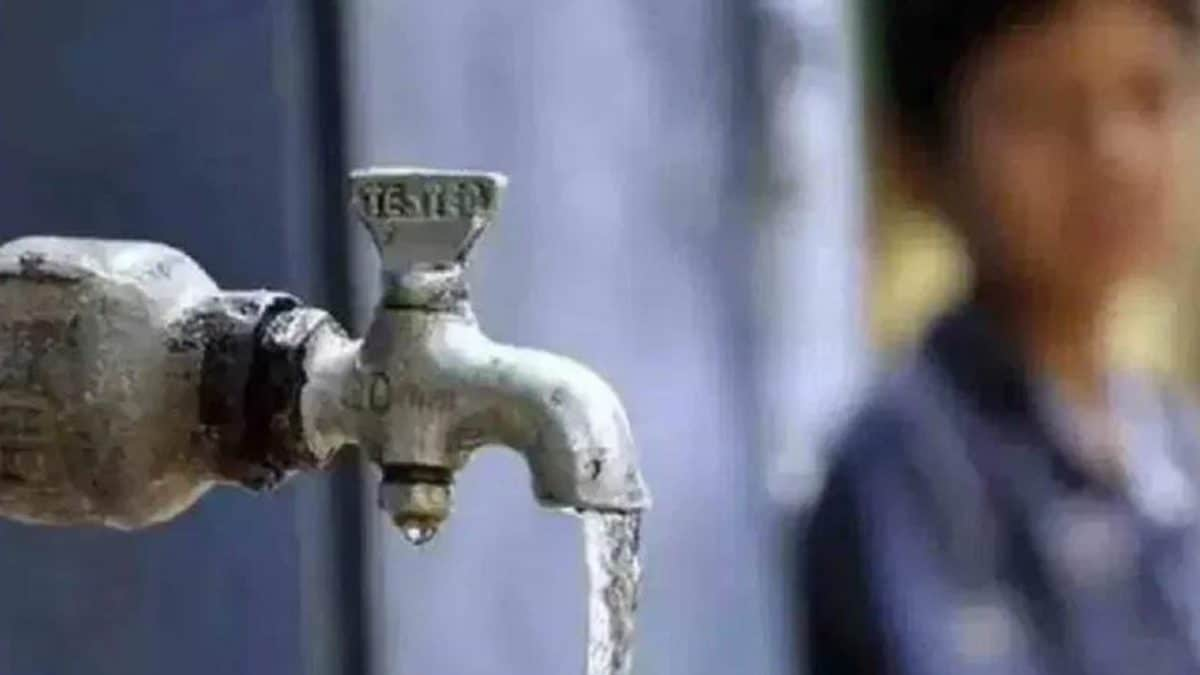
India is at a critical juncture on water management. India’s water consumption would grow to almost 1.5 trillion cubic meters by 2030, as per the 2030 Water Resources Group report Charting Our Water Future (2009) .
To put it in perspective, this demand would cause significant water stress to river basins of Ganga, Krishna, and the tributaries of Indus in India, where demand is already exceeding supply. The situation is further complicated by the fact that more than 60 per cent of the water used in Indian agriculture comes from groundwater, which is depleting at an alarming rate. Of the 806 districts in India, at least 540 districts are already showing water stress, with 98 districts facing extreme dry conditions (IMD, 2024).

Clearly, we are staring at a water crisis. The Hidden Water Footprint We often overlook just how much water is invisibly woven into our daily lives. Can you imagine the water footprint of your breakfast of two slices of bread, two boiled eggs, a tablespoon of jam, a glass of milk and a cup of coffee? This breakfast consumes a staggering 1,000 to 1,200 litres of water, sufficient to sustain a person’s drinking water need for 400 days.
This is called virtual water which is hidden and embedded in what we consume – in food, clothes, electricity and almost everything we buy. As per the World Resources Institute, India exported around 200 billion cubic meters of water in 2018 embedded in different commodities, and it ranks among leading water exporters globally. There is, therefore, a need for a market-based solution for developing a framework for tradable water credits in line with carbon credits, which provides incentives for water conservation and quality improvement.
A Potential Market-Based Solution Like in the case of carbon emissions, businesses of different sizes may be required to develop a full water use inventory across their value chain incorporating Scope 1, Scope 2, and Scope 3 uses. The process may look like this: Scope 1 (Direct Water Use): Here we can consider the water consumed directly by the business in its operations, such as in manufacturing processes, cooling, or on-site irrigation. Scope 2 (Indirect Water Use from Purchased Water): Involves the water footprint associated with the water purchased from external sources, including the water used in generating purchased electricity, steam, or cooling.
Scope 3 (Value Chain Water Use): Covers all indirect water use across the supply chain, including the water embedded in raw materials, outsourced activities, employee consumption, and product use by consumers. The businesses could all join hands for a net zero water commitment by a fixed date. This commitment, if it happens, would require optimising the total water used by a business across its operations and supply chain by implementing measures to reduce water consumption, increase water efficiency, and replenish or offset the equivalent amount of water back into the environment through sustainable practices such as watershed restoration, water recycling, or supporting local water conservation projects.
Businesses could use the now well-known methods of insetting and offsetting. Insetting would require the businesses to reduce water use within their own supply chain by ensuring their suppliers are certified as water-neutral. For offsetting, the businesses may compensate for their water use by buying water credits or investing in water conservation projects outside their supply chains.
How could Water Credits be Generated? However, water credit generation could be a complicated process, as we have seen with carbon credits, where today we have various types of carbon credits across multiple industries. However, a start could be made with agriculture. The framework should include project design, activities, and certification to reduce water consumption, with a defined water quality output.
If we draw an analogy with carbon credits, 1 water credit could be generated for 1,000 cubic meters of water with defined water quality. There could be one or several voluntary water credit providers that could set up water registries and act as a bridge between companies that want to purchase high-quality certified water credits to offset water consumption and project implementers who will be incentivised to save water in their projects and generate water credits which will be sold. One early example is the Water Reuse Certificates (WRC) established by 2030 Water Resources Group (2030 WRG).
Each WRC is equivalent to a certain quantity, say 1,000 cubic meters of water. The first year involves establishing the baseline for the respective user followed by target year where the user adopts measures to achieve their targets, and the final year is when the performance is assessed to issue WRCs and allow trading among the users. Key Challenges and Answers to Them In India, the main challenge to developing a water credit framework is that water is neither considered a commodity nor does it possess any significant economic value.
Water is seen as a fundamental human right. Similar arguments are made in the carbon space as well. Some argue that carbon emissions are a public good that should not be traded, as they have significant implications for the health of the planet and future generations.
Yet we are witnessing a thriving carbon market globally. The solution is to create a tiered pricing mechanism earmarking a certain volume of water to be made available as a basic entitlement for every citizen each month. This basic entitlement covers essential needs such as drinking, cooking, and sanitation, reinforcing water as a fundamental human right.
Meanwhile, placing a price on water used commercially, including its virtual form embedded in products, promotes efficient use and conservation. By balancing these approaches, we can ensure equitable water distribution while incentivising responsible consumption, making more water available for essential human needs, and reducing wastage in commercial activities. This dual strategy supports sustainable water management and social equity.
The second challenge is that unlike carbon credits, water credits do not have a global impact. However, this too can be surmounted by targeting regional impacts, where water credits promote sustainable water management and equitable distribution, mitigating cross-border water stress (2030 WRG). This localised approach ensures the benefit reaches where water stress is the highest.
The third challenge is related to finding a mechanism for pricing water credits. However, it can be determined by assessing regional water scarcity, the costs of water conservation and reuse projects, and market demand and supply dynamics. Regulatory guidelines can set a baseline price, with adjustments based on the social and environmental impact.
Water Credits: The Solution India Needs Considering the urgency of addressing the rapidly depleting water resources and the growing demand for water, government regulations alone may not be adequate. We need a market-based solution now, in the form of water credits. It will ensure the farmers have access to funds and technologies to practice sustainable farming, which will not only conserve water but also boost their income by trading in excess water credits.
It will help businesses become sustainable and prepared to meet any future government regulations in water-scarce regions, attract environmentally conscious consumers and investors, and reduce costs through efficient water use. Moreover, the societal benefits of efficient and equitable water distribution are massive. The initiative will support the National Water Policy and the National Water Mission, which focus on water conservation and efficient water use.
Overall, it will support the achievement of Sustainable Development Goal Number 6, fostering a more resilient and sustainable economy and ensuring water security for future generations. The author is the managing director of Solidaridad Asia and works with farming communities for sustainable development in agriculture. The views expressed in the above piece are personal and solely those of the author.
They do not necessarily reflect Firstpost’s views..














